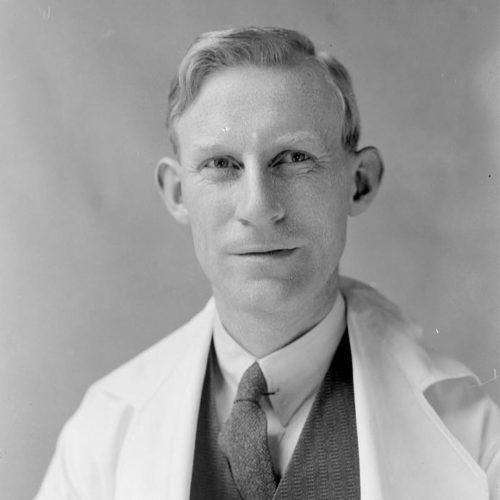Reidar Schøyen Melsom (1899-1976)
Melsom was the last Chief Medical Officer for Leprosy before the position was discontinued in 1957. He was a physician at the Pleiestiftelsen Hospital from 1933 to 1957, where he also lived.

Melsom was born in Stokke in Vestfold and passed the medical exam in 1926. He gained a great deal of experience from private practice, as a physician on a whaling expedition to the Antarctic Ocean, and as a researcher at Rikshospitalet Hospital’s medical and dermatology department, before coming to Bergen. In 1933, he became an authorised specialist in dermatology and venereal diseases and practised as such in Bergen from 1934.
Melsom started as an assistant physician at Pleiestiftelsen Hospital in 1933, and from 1935, he took over as head consultant at Pleiestiftelsen Hospital and as Chief Medical Officer for Leprosy. He and his family lived at Pleiestiftelsen from 1935 to 1957. He showed great care for the residents at Pleiestiftelsen and ensured it was a good home for those who chose to stay there for the rest of their lives.
In 1957, only five residents were still living at Pleiestiftelsen, in addition to two who had had leprosy and were not living at the hospital. Melsom contended that there was no longer a need for a dedicated position as Chief Medical Officer for Leprosy, so both this position and the position of physician at Pleiestiftelsen Hospital were discontinued, and the responsibility for the remaining patients was assigned to the senior consultant at the department of dermatology at Haukeland Hospital.
Reidar Melsom was thus the last person to hold the office of Chief Medical Officer for Leprosy. He moved to Lillestrøm where he became a district medical officer.
Sixty-six years after she moved from Pleiestiftelsen, Melsom’s daughter, Aase Maurseth, returned to Pleiestiftelsen and recalled much from her childhood there, about her father’s work and about the last patients who lived in the large house.



